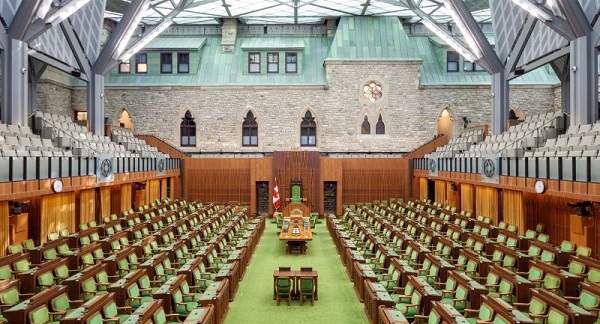Energy
Canada’s natural gas is ready to fill the gap as U.S. shale output falters
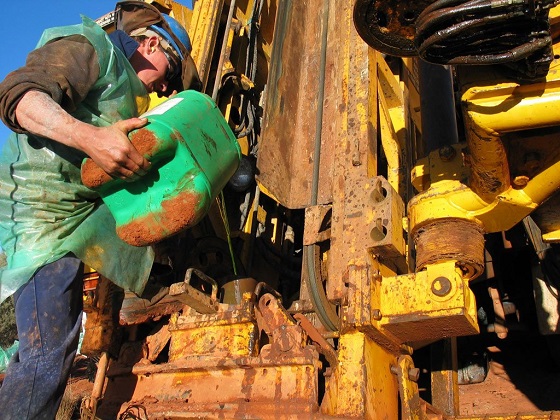
From Resource Works
With American shale production set to decline due to economic pressures, Canada has a unique opportunity to expand its natural gas exports—but a call to action for infrastructure projects like the Sunrise Expansion Program will be key.
Once-plentiful U.S. shale gas, which has long been a cornerstone of North American energy supply, is now facing significant headwinds. Major producers have recently warned of declining production, driven by rising costs, lower investment, and depletion of existing wells. With fewer new wells being drilled, the U.S. shale industry can no longer be counted on to sustain previous production levels, creating a looming gap in North America’s energy market.
With a production plateau long predicted before a downward slope to 2050, the emerging shortfall is positive news for Canada, which is abundant in natural gas resources and well-positioned geographically and economically to step into the breach. Canada already exports approximately 8.6 billion cubic feet of natural gas daily to the U.S., but has the reserves and potential infrastructure capacity to substantially increase this volume.
“As U.S. shale gas enters a period of decline, Canada is poised not just to fill this emerging gap but also to become a global energy leader,” said Stewart Muir, President & CEO of Resource Works.
Projects like LNG Canada, set to begin operation in June 2025, will enable Canada to export gas not just to its traditional U.S. market but also to rapidly growing markets in Asia and Europe. Muir said that Monday’s announcement in Victoria by B.C. Minister of Energy and Climate
Solutions Adrian Dix, committing to increased provincial support for energy infrastructure development, is precisely the proactive step needed to support climate action goals, Indigenous reconciliation and citizen concerns about affordability amid tariff strife.
“Such forward-looking leadership strengthens Canada’s ability to capitalize on our abundant shale gas resources,” he said. “Now is the time for Canadians to voice their support, ensuring we seize this rare opportunity to secure our energy future.”
To fully capitalize on these opportunities, Canada must urgently invest in domestic infrastructure to expand pipeline capacity and accelerate the movement of natural gas to export terminals.
One example of how this is being addressed lies in the pipeline corridor Sunrise expansion program by Westcoast Energy.
Supporting made-in-Canada solutions
The Sunrise Expansion Program by Westcoast Energy exemplifies precisely the type of infrastructure Canada needs. This ambitious project involves constructing approximately 137 kilometres of 42-inch diameter natural gas pipeline between Chetwynd, B.C., and the Canada-U.S. border near Sumas. Enhanced pipeline capacity, new compressor units, and improved energy transmission infrastructure are critical steps towards maximizing Canada’s export potential.
However, successful development hinges on active citizen support and regulatory approval. The Canada Energy Regulator (CER) is currently inviting public comments on the Sunrise Expansion Program, giving Canadians an opportunity to advocate for infrastructure crucial to
national prosperity and energy security.
To lend your support to this critical infrastructure project, visit the CER’s public comment page here: CER Public Comment Link.
As U.S. shale gas production declines, Canada stands at a pivotal moment. With timely action and public support, Canada can leverage its natural gas wealth to become a global energy leader, securing long-term economic and strategic benefits.
Alberta
Meet Marjorie Mallare, a young woman with a leading role at one of Canada’s largest refineries
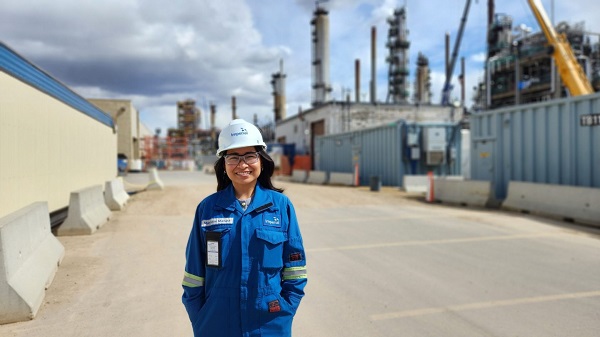
Marjorie Mallare at Imperial Oil’s Strathcona refinery.
Fr0m the Canadian Energy Centre
By Cody Ciona
Mallare manages an all-female team of engineers helping keep operations smooth and safe
As the utilities and hydroprocessing technical lead for Imperial Oil’s Strathcona Refinery near Edmonton, 32-year-old Marjorie Mallare and her team help ensure operations run smoothly and safely at one of Canada’s largest industrial facilities.
The exciting part, she says, is that all four engineers she leads are female.
It’s part of the reason Mallare was named one of ten Young Women in Energy award winners for 2025.
“I hope they realize how important the work that they do is, inspiring and empowering women, connecting women and recognizing women in our industry,” she says.
“That can be very pivotal for young women, or really any young professional that is starting off their career.”
Born and raised in the Philippines, Mallare and her family moved to Edmonton near the end of junior high school.
Living in the industrial heartland of Alberta, it was hard not to see the opportunity present in the oil and gas industry.
When she started post-secondary studies at the University of Alberta in the early 2010s, the industry was booming.
“The amount of opportunities, at least when I started university, which was around 2011, was one of the high periods in our industry at the time. So, it was definitely very attractive,” Mallare says.
When choosing a discipline, engineering stood out.
“At the time, chemical engineering had the most number of females, so that was a contributing factor,” she says.
“Just looking at what’s available within the province, within the city, chemical engineering just seemed to offer a lot more opportunities, a lot more companies that I could potentially work for.”
Through work co-ops in oil and gas, her interest in a career in the industry continued to grow.
“It just kind of naturally happened. That drew my interest more and more, and it made it easier to find future opportunities,” Mallare says.
Following a work practicum with Imperial Oil and graduation, she started working with the company full time.
On the side, Mallare has also driven STEM outreach programs, encouraging young women to pursue careers in engineering.
In addition to supporting the Strathcona Refinery’s operations department, Mallare and her team work on sustainability-focused projects and reducing the refinery’s carbon footprint.
The 200,000 barrel per day facility represents about 30 per cent of Western Canada’s refining capacity.
“Eventually, our group will also be responsible for running the new renewable diesel unit that we’re planning to commission later this year,” says Mallare.
Once completed, the $720 million project will be the largest renewable diesel facility in Canada, producing more than one billion litres of biofuel annually.
Projects like these are why Mallare believes Canada will continue to be a global energy leader.
“We’re leading others already with regards to pursuing more sustainable alternatives and reducing our carbon footprints overall. That’s not something we should lose sight of.”
Energy
Canada to build it’s first four small modular nuclear reactors
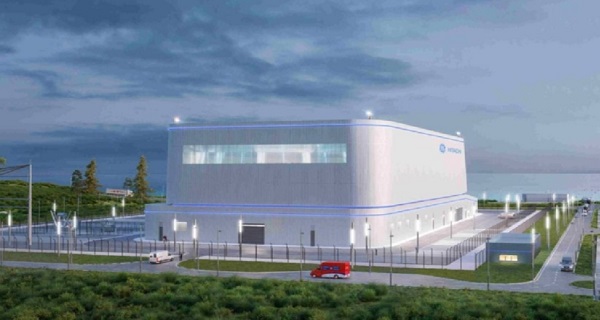
 MxM News
MxM News
Quick Hit:
Ontario has approved plans to build Canada’s first small modular nuclear reactors, positioning the province as a leader in next-generation nuclear energy. The Darlington project is expected to be the first SMR deployment among G7 countries.
Key Details:
- Ontario Power Generation received approval to construct the first of four planned small modular reactors (SMRs) at its Darlington site.
- Each reactor will cost billions, with construction led in partnership with GE Hitachi Nuclear Energy using the BWRX-300 design.
- The project marks the first SMR deployment in the developed world, as interest grows in nuclear as a clean, stable energy source.
Putting Ontario on the map as a leading clean energy superpower.
Starting today, our government is officially saying YES to build the G7’s first Small Modular Reactor, right here in Ontario. Literally leading the world.
🇨🇦 18,000 Canadian jobs
🇨🇦 80% of project from Ontario biz… pic.twitter.com/EFkAEDSkVe— Stephen Lecce (@Sflecce) May 8, 2025
Diving Deeper:
Ontario’s provincial government has officially approved plans for a bold new phase in Canada’s energy strategy: the construction of four small modular nuclear reactors (SMRs) — the first of their kind in the country. Ontario Power Generation (OPG) confirmed Thursday it has received the green light to begin work on the initial reactor at its Darlington New Nuclear Project site.
The reactors represent a significant bet on a new generation of nuclear technology aimed at producing reliable, zero-emissions energy more efficiently and at smaller scale. Unlike traditional nuclear plants that take decades and tens of billions of dollars to complete, SMRs are designed to be built in factories and shipped to installation sites — a method supporters claim will be faster and more cost-effective over time.
The Darlington SMR will utilize the BWRX-300 model, developed by GE Hitachi Nuclear Energy, which delivers 300 megawatts of power — about one-third the output of traditional nuclear reactors. OPG signed an agreement with GE Hitachi in 2023 to deploy the technology at the Darlington site.
Last month, Canada’s nuclear regulator issued a construction license for the project, clearing a key hurdle. Now, with provincial support secured, the Darlington SMR is on track to become the first of its kind to go live in a G7 country — a milestone for both Canada’s energy ambitions and the broader international nuclear industry.
Only a handful of SMRs have been built to date, all in China and Russia.
-

 Alberta22 hours ago
Alberta22 hours agoMeet Marjorie Mallare, a young woman with a leading role at one of Canada’s largest refineries
-
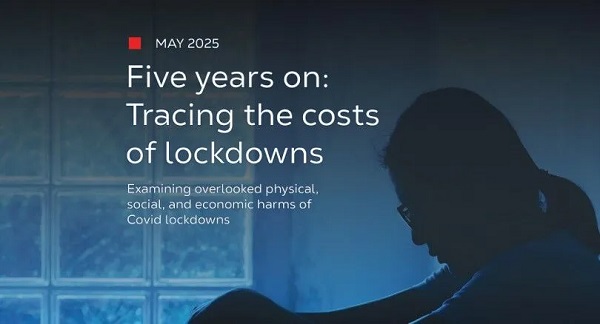
 Addictions2 days ago
Addictions2 days agoNew Report – Five years on: Tracing the costs of lockdowns
-

 Addictions1 day ago
Addictions1 day agoField of death: Art project highlights drug crisis’ impact on tradespeople
-

 espionage1 day ago
espionage1 day agoRepublican congresswoman introduces bill to repeal Patriot Act
-

 Crime1 day ago
Crime1 day agoHybrid threats, broken borders, and organized chaos—transnational organized crime in Canada
-

 Business1 day ago
Business1 day agoFrom ‘Elbows Up’ To ‘Thumbs Up’
-

 Business2 days ago
Business2 days agoReal Challenges Await Carney
-

 espionage2 days ago
espionage2 days agoGOP rep moves to shred PATRIOT Act, dismantle Deep State spy powers






